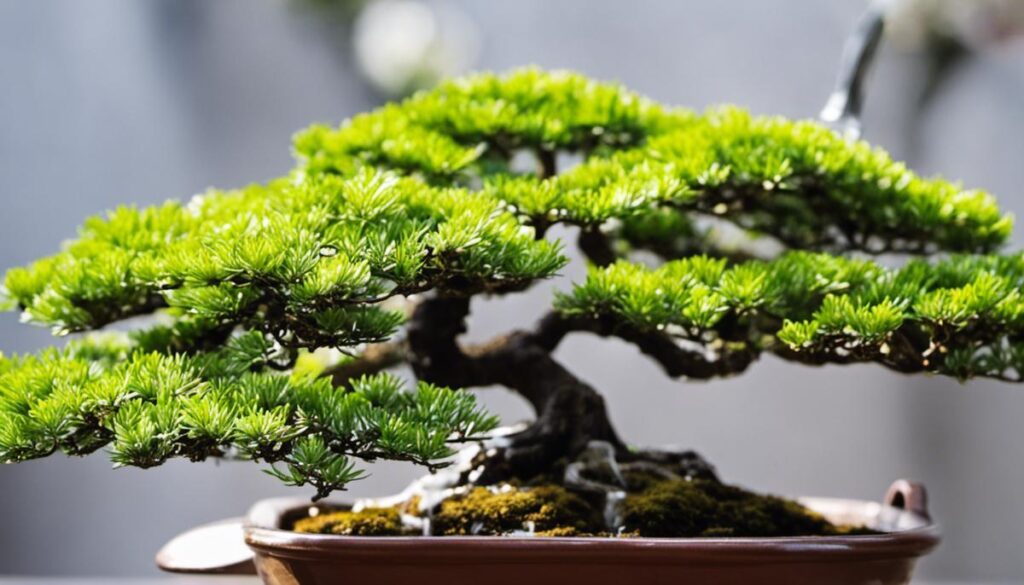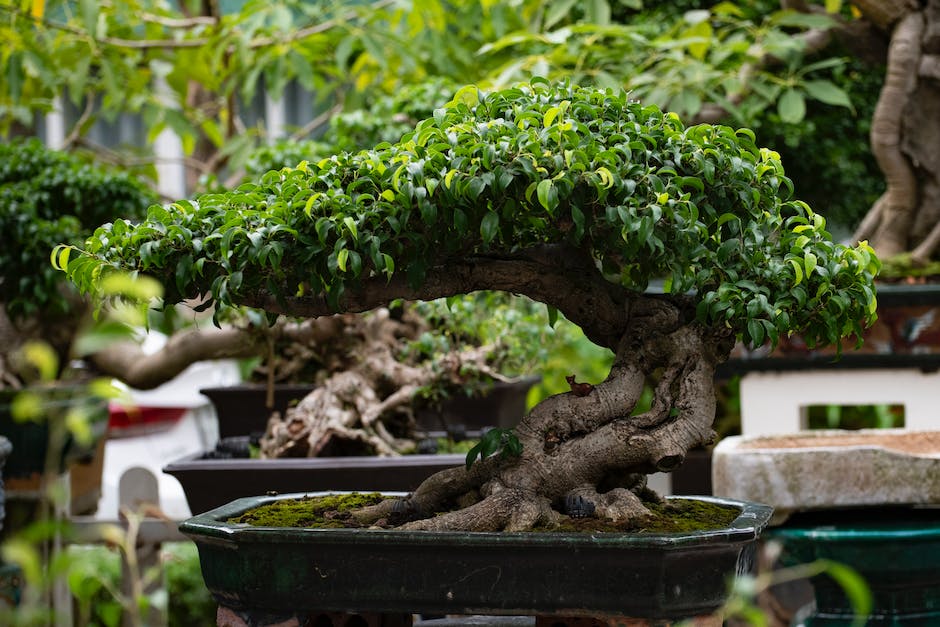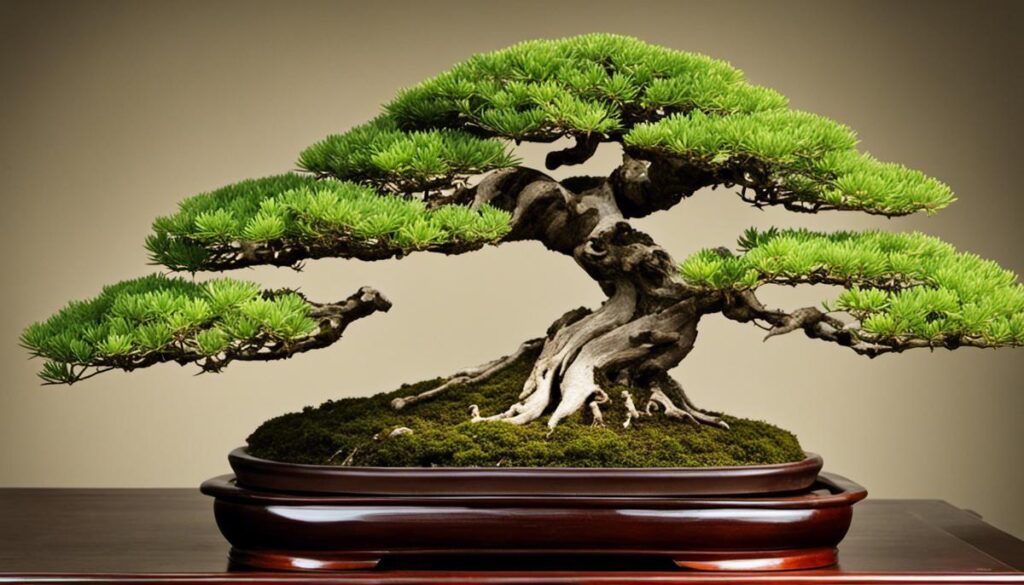The world of outdoor Bonsai trees opens up a realm of miniaturized natural beauty. This distinctive field of horticulture transforms ordinary plant varieties into extraordinary living masterpieces. Whether you’re an ardent horticulturist or a casual observer, understanding the different tree species suitable for outdoor Bonsai growth can be fascinating.
This exploration uncovers their unique features, origins, and specific care requirements. With the correct guidance, learning how to cultivate and maintain these striking specimens can be an enriching journey. This understanding will also allow you to better appreciate these living pieces of art and their intriguing backstories.
Understanding Outdoor Bonsai Tree Varieties

Understanding Outdoor Bonsai Tree Varieties
Bonsai trees are categorized into two main groups based on their cultivation environment: indoor and outdoor bonsai. Outdoor bonsai trees are a popular choice among garden enthusiasts due to their resilience, natural growth patterns, and aesthetic appeal. There are several types of outdoor bonsai species, each varying in their specific sunlight, soil, and temperature requirements.
Japanese Maple Bonsai (Acer Palmatum)
The Japanese Maple Bonsai, or Acer Palmatum, is one of the most popular outdoor bonsai tree species. It originates from East Asia, particularly Japan, Korea, and China. This species has attractive, delicate foliage and a very adaptable root system. It requires full sunlight exposure, but should be protected from the intense midday sun. The soil needs to be well-drained, and rich in organic matter. Acer Palmatum thrives in cooler temperature conditions.
Juniper Bonsai (Juniperus)
Juniper Bonsai trees, or Juniperus, are also common and originated in the cold climates of the Northern Hemisphere. Various species under the juniper group exist, with different specifics and characteristics. Juniper bonsai trees of all species require at least four hours of direct sunlight each day and a well-drained soil. For temperature, these trees are frost-resistant, but too much cold will damage them, and their roots may rot in excessively wet soil.
Chinese Elm Bonsai (Ulmus Parvifolia)
The Chinese Elm Bonsai, also known as Ulmus Parvifolia, boasts a striking appearance with its dark, glossy leaves and fine twigs. From the regions of East Asia, this bonsai is highly resistant to harsh conditions, making it ideal for beginners. It thrives under full sun and partial shade, is relatively flexible in terms of soil conditions as long as good drainage is ensured, and can tolerate temperature swings.
Black Pine Bonsai (Pinus Thunbergii)
Native to the coastal areas of Japan, the Black Pine bonsai, or Pinus Thunbergii, is hailed for its rugged appearance, growing up to five feet tall. As bonsai, it is robust and relatively easy to care for. It requires direct sunlight and well-draining, slightly acidic soil. It can withstand both hot summer and cold winter temperatures.
Caring for Outdoor Bonsai Trees
The care of Outdoor Bonsai trees hinges on a few universal requirements. These miniature marvels demand precision pruning to maintain their diminutive stature and necessitate well-draining soil. They thrive in abundant sunlight, however, direct exposure during peak sunlight hours can be harmful. Regular hydration is vital, but excessive water that saturates the soil should be avoided. Outdoor bonsai trees are generally sturdy and can withstand the cold of winter, but extreme conditions can be damaging. In such cases, consider transferring your bonsai to a sheltered greenhouse or indoor setting for a brief period.
Essential Care Tips for Outdoor Bonsai Trees

Making Sense of Outdoor Bonsai Trees
Outdoor bonsai trees are nuanced replicas of actual trees that have been carefully trained and pruned to keep them small and artistically sculptured. While indoor bonsai trees may be preferred by beginners due to their straightforward care, outdoor bonsai trees present a unique and intriguing challenge for the more seasoned enthusiast. Additionally, these bonsai trees, much like their grander counterparts, experience the same shifts with the changing seasons.
Watering Outdoor Bonsai Trees
Watering is the most essential practice in the successful growing of outdoor bonsai trees. However, it’s impossible to provide a strict watering schedule due to the varying types of trees as well as seasonal changes and the different climates in which they’re grown. With sophisticated moisture meters and a simple finger test to feel the dryness of the soil, you can ascertain when your bonsai needs watering. It’s crucial also to ensure good drainage to prevent roots from standing in water.
Repotting Outdoor Bonsai Trees
Repotting is another important aspect of outdoor bonsai tree care. As miniature trees, they are typically kept in small pots, which means limited root space. Recognizing when your tree needs repotting, usually once every two to five years, is important to prevent the tree from starving or outgrowing its pot. The best time to repot a bonsai tree is usually during late winter or early spring.
Fertilizing Outdoor Bonsai Trees
When it comes to fertilizing outdoor bonsai trees, the specific needs depend on the species and the season. Generally, fertilization should occur during the tree’s growth season, which is usually from early spring to late summer. Using a balanced, slow-release fertilizer designed for bonsai can provide the right nutrients your tree needs to thrive and grow.
Pruning Outdoor Bonsai Trees
Pruning is an ongoing necessity when caring for outdoor bonsai trees. The aim is to maintain their miniature size yet allow them to grow in an aesthetically appealing way. Pruning is usually done with special bonsai pruning tools and has two main types: maintenance pruning, which helps maintain and refine the existing shape of the bonsai, and structural or stylistic pruning, which involves significant removal of branches or roots to achieve a desired shape.
Seasonal Changes and Outdoor Bonsai Trees
Understanding seasonal changes is critical as outdoor bonsai trees respond to the seasons much like full-sized outdoor trees. In the spring, they experience a growth spurt and require more watering and fertilizing. While in the summer, protecting them from extreme heat is necessary. When fall arrives, reducing watering and stopping fertilizing is advised as the trees start transitioning into a dormant state. In winter, depending on the tree species and the local climate, some may require protection from harsh conditions.
Keeping your outdoor bonsai trees healthy and radiant is a beautiful reflection of the art of bonsai cultivation, a practice that requires patience and meticulous care. Spending time to observe and understand the unique needs of your particular bonsai species is key. The development of a regular care routine tailored to these needs will be instrumental in ensuring your bonsai’s health and longevity.

Challenges and Common Mistakes in Growing Outdoor Bonsai

Understanding the Challenges of Nurturing Outdoor Bonsai Trees
Outdoor bonsai trees can be a captivating and rewarding sight when properly cared for. Nonetheless, the task comes with its unique set of challenges, including possible pest infestations, diseases, and environmental influences such as yellowing leaves or hindered growth.
The outdoor conditions can pose a significant threat to your bonsai. These hardy but sensitive plants need to be protected from extreme changes in weather, including cold snaps, strong winds, or intense sun exposure. Adequate shading and wind breaks are essential for maintaining your bonsai’s health and aesthetic appeal.
Another essential aspect to consider in the care of outdoor bonsai trees is the balance of water. Water is integral to their health, but unbalanced watering habits can cause significant problems. Overabundance can instigate root rot, while insufficient watering can result in dehydration and restricted growth.
Common Mistakes in Bonsai Care
The most common mistakes that people often make when caring for outdoor bonsai include improper watering, inadequate light, neglecting to repot, and misunderstandings about indoor vs. outdoor bonsai needs.
Many bonsai owners tend to either overwater or underwater their bonsai trees. It’s essential to maintain a balance, watering only when the topsoil feels dry and then thoroughly soaking the soil.
Another common mistake is not allowing enough sunlight. Outdoor bonsai trees need at least five to six hours of direct sunlight each day. Inadequate light can lead to a weakened tree that lacks vigor and is more susceptible to diseases and pests.
Troubleshooting Bonsai Issues
If you notice your bonsai tree’s leaves are turning yellow, it could be due to multiple reasons such as overwatering, insufficient light, or nutrient deficiency. To alleviate these symptoms, adjust watering habits, relocate the tree to a more exposed spot, or supplement with appropriate bonsai nutrients.
Pest infestations, like aphids, scale insects, or spider mites, can be a serious problem for outdoor bonsai trees. If left untreated, these pests can severely damage or kill your bonsai. Regular inspections for pests and prompt treatments with appropriate solutions can help protect your bonsai from these threats.
Disease is another issue that may affect outdoor bonsai trees. Fungal diseases, in particular, can be problematic. Prevention is key when it comes to bonsai diseases. Ensure the tree has a healthy environment with well-draining soil, proper watering, and good air flow around the tree.
To identify and rectify stunted growth, regular pruning is necessary. This not only maintains the bonsai tree’s shape but also encourages new growth.
Solutions for Outdoor Bonsai Care
To maintain a healthy and vibrant outdoor bonsai, ensure a location where it would receive ample sunlight but also some afternoon shade to protect it from intense heat. Regular watering is crucial, and it’s essential to check the soil daily.
Periodic repotting is essential for the health and growth of bonsai trees. It helps prevent the tree from becoming pot-bound and promotes better absorption of nutrients.
Bonsai trees require specific nutrients to thrive. Use a slow-release fertilizer developed explicitly for bonsai use and follow the package instructions. Regular, light feeding during the growing season is better than heavy feeding.
Pruning, wiring, and styling should be conducted throughout the year to keep the tree in shape and to stimulate growth. But remember, patience is key in bonsai cultivation. A well-maintained outdoor bonsai tree can make a striking addition to any garden with its unique size, shape, and form.

Outdoor Bonsai trees are a test of patience, commitment, and attention to detail. Like any other form of gardening, fostering these trees presents its own unique challenges, but one that rewards generously in terms of aesthetic pleasure and personal satisfaction. Every possible difficulty you encounter along the way is an opportunity to refine your skills and deepen your understanding of this ancient Japanese art form. While mistakes can be made, each one brings its own crucial lesson. By nurturing these trees and carefully tending to their needs, you become part of their story, shaping their appearance and directing their growth for years to come. Discover the fulfilling journey of growing outdoor Bonsai trees and enjoy the captivation they bring to any garden.
